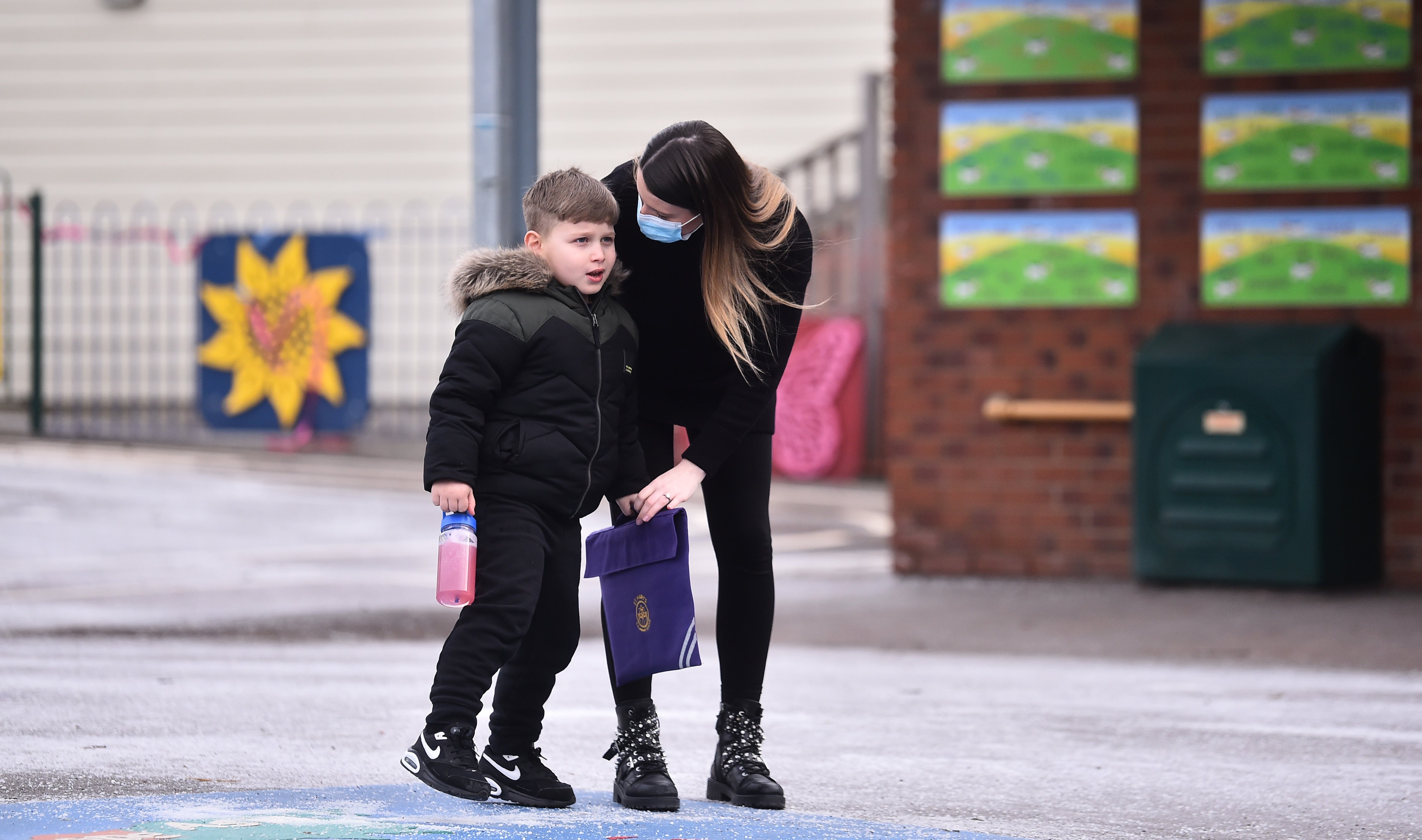As schools go back, who needs to take a Covid test?
Key questions about the schools Covid testing scheme

Your support helps us to tell the story
From reproductive rights to climate change to Big Tech, The Independent is on the ground when the story is developing. Whether it's investigating the financials of Elon Musk's pro-Trump PAC or producing our latest documentary, 'The A Word', which shines a light on the American women fighting for reproductive rights, we know how important it is to parse out the facts from the messaging.
At such a critical moment in US history, we need reporters on the ground. Your donation allows us to keep sending journalists to speak to both sides of the story.
The Independent is trusted by Americans across the entire political spectrum. And unlike many other quality news outlets, we choose not to lock Americans out of our reporting and analysis with paywalls. We believe quality journalism should be available to everyone, paid for by those who can afford it.
Your support makes all the difference.Millions of pupils and their families are being asked to take Covid-19 tests as schools reopen their doors.
Even those without symptoms will undergo testing as they return to classrooms following lockdown on 8 March.
Here the key questions answered about the schools testing scheme in England.
Why are people being asked to have a test if they do not have symptoms?
It is estimated that about one in three people who have Covid-19 have no symptoms.
To help stop the spread of the virus the government has introduced asymptomatic testing for certain people.
This means people without symptoms are being asked to check whether they are infected with the virus.
It is hoped that by identifying these people, and asking them to isolate at home if they test positive, the virus will stop spreading as quickly.
Who is being asked to take tests?
Teachers and school staff, secondary school pupils and college students, and the “households” of pupils in school and college, including family members, carers and people in support bubbles.
Primary school pupils are not currently being asked to take tests.
When and where will they be tested?
Twice a week at home, though secondary school pupils and college students are taking their first three tests at their school or college under supervision.
What kind of test is it?
Lateral flow tests are quick turnaround tests, which can be performed without the need for laboratory assessment. Pupils, staff and their families are taking the lateral flow tests.
PCR (Polymerase chain reaction) tests are swab tests of the nose and throat, which are assessed in a lab setting.
These are usually performed at Test and Trace centres for people with symptoms of Covid-19 or those who have tested positive with a lateral flow test and need to confirm their result.
What do I need to do?
The test packs come with simple instructions which should be followed step by step.
The test involves taking a swab of the throat and nose, dipping the swab in a solution and then placing two drops on to a piece of kit that looks somewhat similar to a home pregnancy test. The result shows up within half an hour.
What do I do with my result?
People who take the tests are being asked to report the result to NHS Test and Trace on the same day they take it, either by inputting their results online at www.gov.uk/report-covid19-result or by calling 119.
What do I do if I test positive?
People with a positive result should self-isolate immediately, get a PCR test to confirm the result and follow the stay-at-home guidance. Pupils, students and staff should also tell their school or college if they test positive.
For the first three tests undertaken by secondary school pupils and college students under supervision at their education establishment, a follow-up PCR test is not necessary but the pupil will still be required to self-isolate if they test positive.
How do I get my test?
Teachers and staff will get kits provided by their school, as will secondary pupils and college students.
The families and support bubbles of primary school pupils are being asked to get their tests through a number of different routes, including: through their employer if they are offering testing to employees, at a local test site, collecting a home test kit from a test site or ordering kits online.
How effective are the tests?
Getting a negative result does not mean a person is not infected with Covid-19 - so even with a negative result, people still need to follow social distancing guidance.
People have been known to take the test on one day and become unwell with Covid-19 the next.
Some researchers have previously suggested that people need better awareness of the efficacy of lateral flow tests.
Jon Deeks, professor of biostatistics at the University of Birmingham, said in January: “Most of us have never done a diagnostic test in our lives ourselves, and we would expect a positive to mean ‘yes’ and a negative to mean ‘no’.
“But here a positive means ‘probably’ and a negative means ‘we really can’t tell’.”
PA



Join our commenting forum
Join thought-provoking conversations, follow other Independent readers and see their replies
Comments